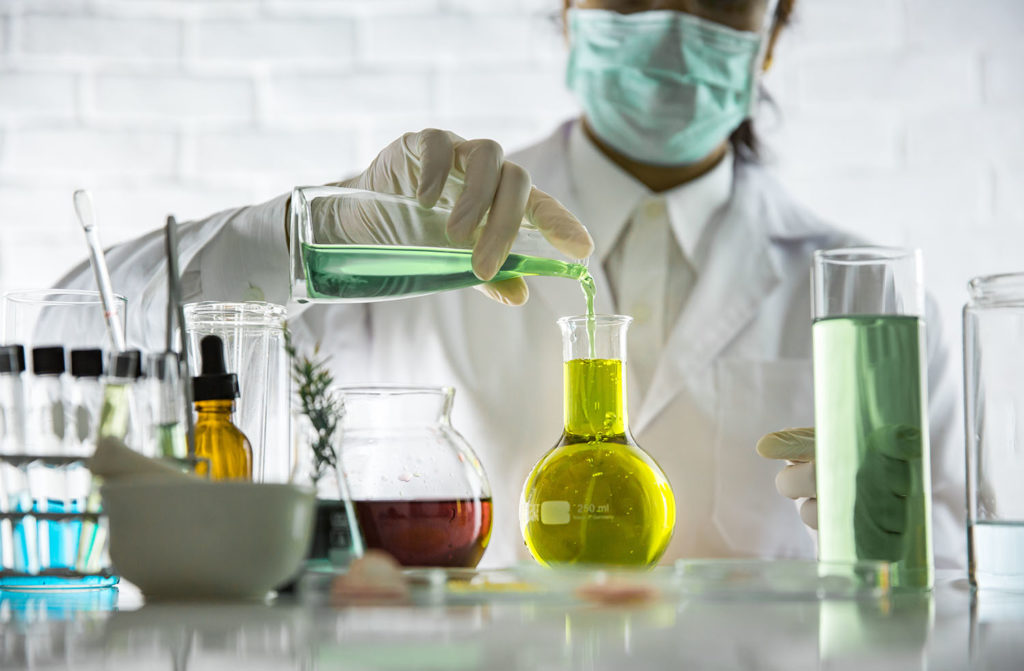In his recent paper, Dr. Mikhail Blagosklonny explains his perspective on the current landscape of anti-aging drug studies, a key differentiation between healthspan and lifespan variables, and the next steps for human use of anti-aging drugs—beyond clinical trials.

The process of human aging is a fascinating mystery. Despite all that we do not know, a handful of researchers have dedicated recent decades to the exciting beginnings of solving this biological riddle. One such researcher is Dr. Mikhail Blagosklonny. As a professor of oncology at the Roswell Park Cancer Institute in Buffalo, New York, and Editor-in-Chief at the AgingandOncotarget journals, Dr. Blagosklonny’s mission is to prevent cancer (and other age-related diseases) by inhibiting the aging process—preventing cancer by maintaining youth.
The cover paper chosen for Oncotarget’s Volume 12, Issue #3, is titled, “The goal of geroscience is life extension;” a research perspective written by Dr. Blagosklonny. In this compelling paper, he reflects on the history of anti-aging studies, the differences between drugs that enhance healthspan versus lifespan, and next steps in the human application of anti-aging drugs.
Hyperfunction Theory of Aging
“According to the geroscience hypothesis, aging is a risk factor for diseases [127]. According to hyperfunction theory, in contrast, aging is a sum of all age-related diseases, not their risk factors.”
Dr. Blagosklonny defines aging as a continuation of human development, driven partially by growth-promoting pathways which drive age-related diseases—he has coined this as the hyperfunction theory.
“Hyperfunction (inappropriate activation) of these signaling pathways directly drive all age-related diseases, which are manifestations of aging. We just need clinically available inhibitors (drugs) of these signaling pathways to extend both healthspan and lifespan, by slowing aging.”
Increasing Lifespan via Increasing Healthspan
Before beginning his interpretation of data from previous anti-aging research studies, Dr. Blagosklonny emphasises the importance of correctly measuring healthspan and lifespan. As indicated in his paper title, the goal of geroscience is to extend lifespan by way of extending overall healthspan.
“Healthspan is a period of life without age-related diseases [27]. It is disease-free survival.”
Healthspan can be difficult to measure due to the nature and hidden course of many diseases. If one particular disease is subdued by treatment in a study and healthspan appears to be increased (through one marker of health or another), this does not guarantee that other age-related diseases have been nullified by this treatment. Dr. Blagosklonny explains that accurate measurements of healthspan are important because, based on the hyperfunction theory, aging is the sum of all age-related diseases.
“After all, aging is an exponential increase of death with age and should be measured by deadly diseases.”
Another point he makes is that many anti-aging drug trials have presented results finding increased healthspan in mice without demonstrating an increase in lifespan. Given that increased healthspan should always lead to increased lifespan, it is not sufficient to only measure healthspan without measuring lifespan in animal studies of anti-aging drugs. If lifespan is not increased, the drug does not demonstrate longevity or anti-aging properties.
“So how is it possible that some senolytics, NAD boosters and resveratrol, increase healthspan without lifespan? The simplest explanation is that they do not increase healthspan at all, because such studies use irrelevant or ambiguous markers of health.”
Over the years, numerous initially promising anti-aging drugs have been tested and debunked by researchers. No compound has continued to withstand the many tests, or has delivered consistent results, quite like the unique bacterium, rapamycin.
Anti-aging Properties in Rapamycin
Rapamycin was discovered in 1964 in a test tube sample of dirt taken from Easter Island—a highly remote volcanic island in the Pacific ocean, west of Chile. Initially looking for antibiotics (often uncovered in the dirt) researchers found the rapamycin bacteria unexpectedly. To their surprise, this new bacteria created a defensive chemical with the ability to affect the activity of a protein and homeostatic ATP sensor called the mammalian target of rapamycin, or mTOR. mTOR is now known to function in regulatory pathways that are responsible for governing cell growth.
“It was predicted that rapamycin must extend lifespan before it was shown in any animal [105].”
In 1999, rapamycin was FDA approved to regulate hyperimmunity in transplant patients to help enable their immune system to accept a new organ. Since then, rapamycin’s ability to slow cell growth and proliferation has been widely accepted as an anticancer agent and the focus of anti-aging studies in a number of mouse-modeled trials.
“Since 2009, dozens of studies have shown that rapamycin extends medium and maximum lifespan in both males and females in all strains of normal mice tested, as well as in some cancer-prone and short-lived mice [36, 40–70].
Other Drugs With and Without Anti-aging Potential
In this paper, Dr. Blagosklonny categorizes a list of seemingly debunked anti-aging drugs with little or no results, including antioxidants, resveratrol, curcumin, quercetin (used alone), and spermidine. He explains that some of these drugs may have potential when used in combination with other drugs in future studies.
He acknowledges potential in berberine (one study found promising initial results), fisetin (clinically available and safe for human use), 17-alpha-estradiol (only results in male mice thus far), acarbose (blocks digestion of complex carbs), enalapril (decreases oxidative damage), losartan (angiotensin receptor blocker), quercetin with dasatinib (clinically available and safe for human use), and metformin.
“Some life-extending drugs are already approved for human use: supplements (fisetin, vitamin B3 and its analogs), over-the-counter medicine (aspirin) and prescription drugs (rapamycin, metformin, dasatinib, enilopril).”
Dr. Blagosklonny recalls a famous study of metformin where, at a low doses, it increased lifespan in male mice and, at high doses, it ironically decreased lifespan. Metformin was also tested with rapamycin in this study and demonstrated improved results in extending lifespan.
“Yet, a combination of metformin and rapamycin should be re-tested to include a rapamycin-alone group.”
Conclusion
“I expect that a combination of low doses of pan-mTOR and MEK inhibitors with high doses of rapamycin would extend life further compared with rapamycin alone. That could be the next important advance in the anti-aging field since the discovery of anti-aging properties of rapamycin.”
Dr. Blagosklonny believes that researchers should not wait for the lifespan results of clinical trials in humans to begin widespread application of these drugs, since studies already safely display increased lifespan and longevity in mouse models. He is so convinced by rapamycin that Dr. Blagosklonny is currently taking 10 milligrams of rapamycin per week along with his personalized treatment plan, a ketogenic diet, and exercise to jumpstart the next phase of human anti-aging trials within our lifetime. He notes that medical doctors interested in this topic may email Blagosklonny@rapalogs.com or follow him on Twitter @Blagosklonny.
“This article does not represent medical advice or recommendations to patients. The media should exercise caution and seek expert medical advice for interpretation when referring to this article.”
Click here to read the full research perspective on Oncotarget.com.
—
Oncotargetis a unique platform designed to house scientific studies in a journal format that is available for anyone to read—without a paywall making access more difficult. This means information that has the potential to benefit our societies from the inside out can be shared with friends, neighbors, colleagues, and other researchers, far and wide.
For media inquiries, please contact media@impactjournals.com.

